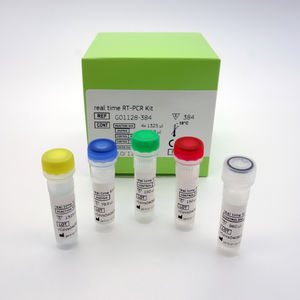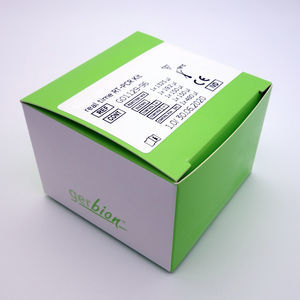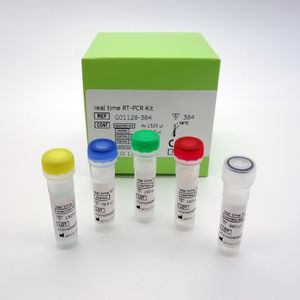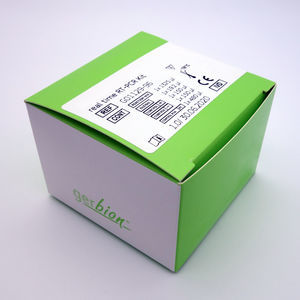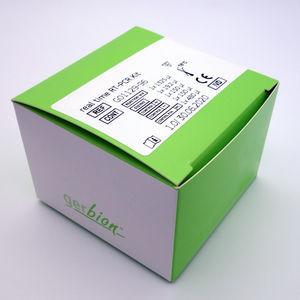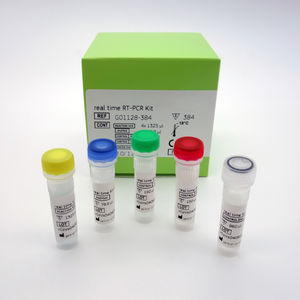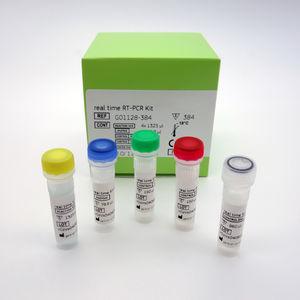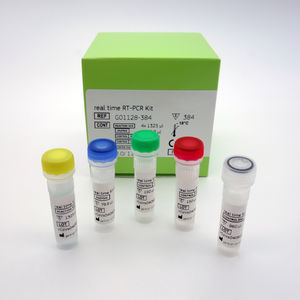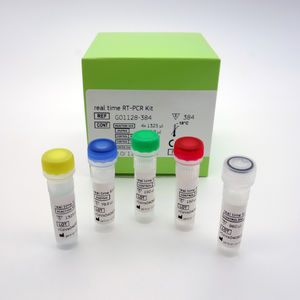
- Laboratory
- Laboratory medicine
- Solution reagent
- LINEAR CHEMICALS
- Company
- Products
- Catalogs
- News & Trends
- Exhibitions
Solution reagent kit G01064-32diagnosticRT-qPCRliquid
Add to favorites
Compare this product
Characteristics
- Type
- solution
- Applications
- diagnostic, RT-qPCR
- Format
- liquid
- Tested parameter
- for genes, TM
- Micro-organism
- Legionella pneumophila
- Method
- enzymatic
- Storage temperature
Min.: -8 °C
(18 °F)-18 °C
(-0 °F)Max.: 2 °C
(36 °F)
Description
The diarellaLegionella real time PCR TM is an assay for the detection of the DNA of Legionella pneumophila in clinical specimens (e.g. throat swabs, nasal swabs, bronchial lavage) and environmental samples (e.g. water samples).
2 Pathogen Information
Legionella are widespread environmental germs which occur in natural and also artificial water carrying sources, such as plumbing fixtures and potable water systems. They also are able to infect protozoans and subsequently reproduce within these organisms. Temperatures between 30°C and 50°C and the ability to subsequently reproduce within these organisms increase their growth. From their natural habitat, Legionella are sometimes placed in the man-made water systems. Consequently, Legionella are also prevalent in anthropogenic waters such as potable water, cooling tower reservoirs, and whirlpools.
Aerosol-generating systems such as faucets, showerheads, cooling towers, and nebulizers aid in the transmission of Legionella from water to air. Human inhalation of contaminated aerosols leads to Legionella infections and disease outbreaks. Infection from inhaling airborne water droplets or mist containing viable Legionella, which are small enough to pass deep into the lungs and be deposited in the alveoli, the small pockets in the lungs. The bacteria rapidly reproduce within the macrophages. Although healthy individuals may develop Legionnaires Disease, people thought to be at increased risk of infection include smokers, patients with chronic respiratory diseases and any immunosuppressed condition.
Catalogs
No catalogs are available for this product.
See all of LINEAR CHEMICALS‘s catalogsExhibitions
Meet this supplier at the following exhibition(s):


Related Searches
- Assay kit
- LINEAR solution reagent
- Blood assay kit
- LINEAR molecular biology reagent
- Immunoassay assay kit
- Plasma assay kit
- Infectious disease detection kit
- LINEAR rapid blood test
- Rapid lateral flow test
- LINEAR diagnostic reagent
- LINEAR laboratory reagent
- LINEAR protein reagent
- Immunoassay rapid diagnostic test
- LINEAR cassette rapid test
- LINEAR rapid virus test
- LINEAR rapid serum test
- LINEAR rapid plasma test
- Histology reagent kit
- LINEAR rapid infectious disease test
- LINEAR rapid whole blood test
*Prices are pre-tax. They exclude delivery charges and customs duties and do not include additional charges for installation or activation options. Prices are indicative only and may vary by country, with changes to the cost of raw materials and exchange rates.












